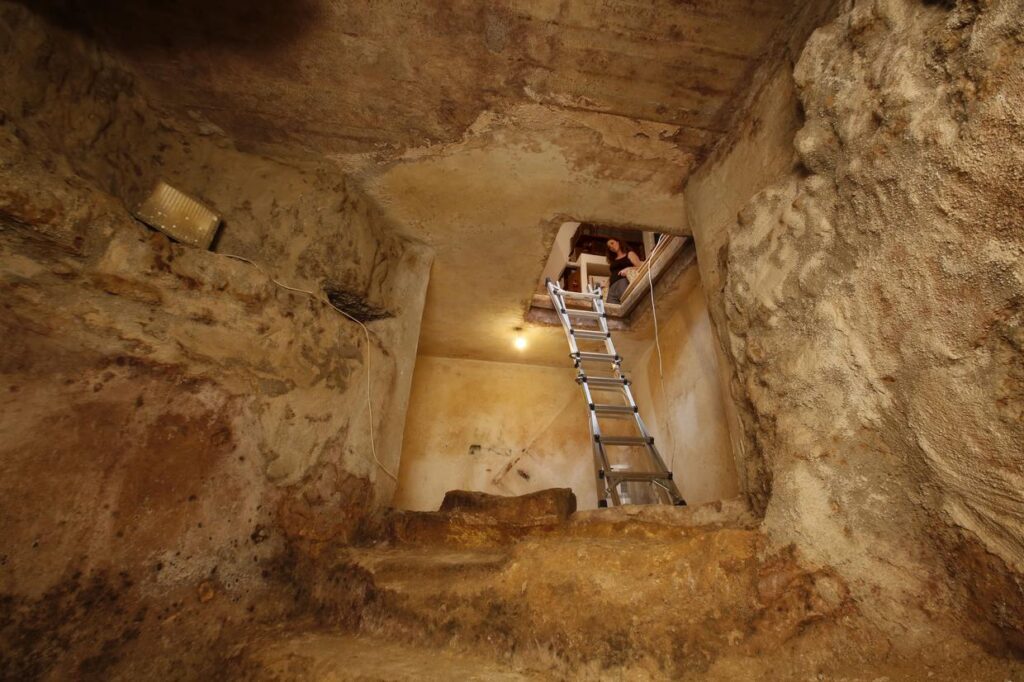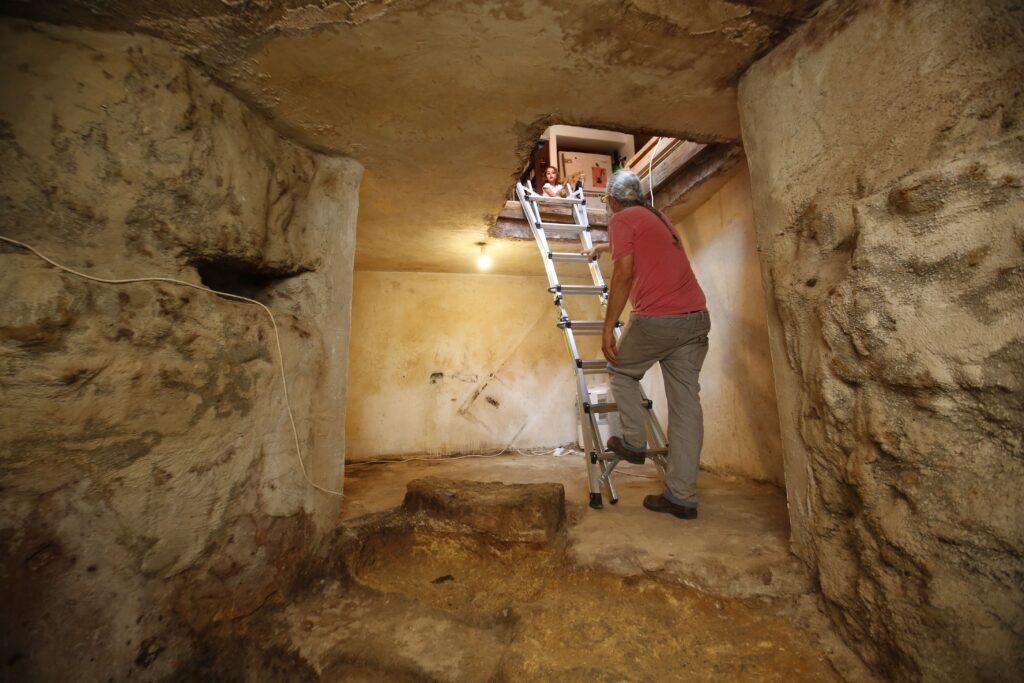Israeli family discovers ancient treasure under the living room
Sunday, Israeli authorities said they identified a rare, well-preserved 2,000-year-old Jewish ritual bath hidden beneath the floorboards of a Jerusalem home.

The discovery in Ein Kerem neighborhood in Jerusalem, archeologists said, sheds new light on the area’s ancient Jewish and early Christian communities.
But the discovery might be most noteworthy because the couple that owns the home literally kept the treasure hidden under a rug for three years before choosing to come clean.
In an interview, the wife said the family found evidence of the mikveh, or Jewish ritual bath while renovating their home three years ago.
Construction workers were using heavy machinery that sunk through a hole, leading the crew to discover the bath.

She said that she and her husband were unsure of the significance and continued with the planned construction. But they also preserved the discovery, adding a pair of wooden doors in the floor to allow access to the bath and concealing the entrance with a rug.
The couple’s curiosity, however, persisted. Earlier this week, they contacted the Israeli Antiquities Authority and reported their finding. The family asked that their names be withheld to protect their privacy.
Amit Reem, an archaeologist with the authority, estimated the ritual bath dates back to the first century B.C., around the time of the Second Jewish Temple.
The bath remains largely intact and includes a staircase leading to what was once a pool. Archeologists also found pottery and unique stone vessels dating to the same period.
According to Christian tradition, John the Baptist is said to have been born in the Jewish community around Ein Kerem around the first century. Reem said the discovery adds to the physical evidence of the Jewish community in the area, which he said has been “sporadic.”
Reem said it is not uncommon for households around Jerusalem to unearth Jewish antiquities under their floorboards, though he did not know how many cases there were.
The family does not have to move and will keep the ritual bath preserved with the help of the Antiquities Authority.





